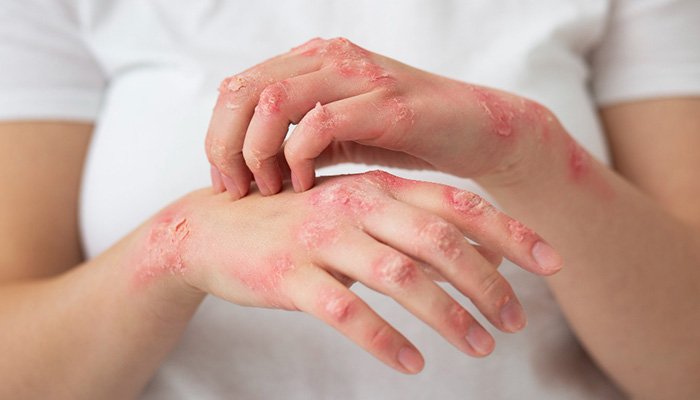Being allergic to surroundings is quite a normal thing, all that the person has to do is to stay away from the allergens (agents that cause allergy), which might reduce the symptoms caused by allergic reactions. But few people are still caught up struggling to overcome the symptoms of allergies not knowing what actually causes the allergy. I can understand the situation because, few months ago, even I was juggling against allergy and desperately wanted to know the cause of it. When approached a doctor, he guessed that it could be because of dust and dust mites. To know what are dust mites and how they can be avoided go on with the article.
About Dust mites
Dust mites are creamy white globe shaped minute bugs, which are about 1/100th of an inch in length. But the female is the largest of all measuring about 0.015625 of an inch. They can be seen only through a magnifying microscope. Dust mites can live up to 80 days with an average life span of about 20 to 30 days. The female lays 1 or 2 eggs everyday, which mature and become adult in 30 days. Dust mites are not as dangerous as they appear, they neither bite nor they live as a parasite on humans. They feed on human and animal danders (dead cells) that are found in air and in the floor. The excreta of these dust mites are actually capable of causing allergic reaction and asthma in many people.
Habitat
Dust mites are found everywhere where there are humans or animals. Dust mites love to dwell in areas which are warm, moist, and filled with dust. And such favorable environment is provided to them in the bedroom, usually pillows, mattresses, carpets, clothes, curtain hangings, stuffed toys, and furniture. The level of dust mites inside the house is more than what is found outside as the condition is more favorable with ample food source in the home than outside. The population of dust mites peaks in summer in the humid climate and lowers during winter. It is said that 1 gram of dust has about 1000 dust mites.
Dust mite allergy
Dust mites are actually harmless, but they carry decomposing animal parts and protein in their feces. These proteins are called allergens as they are capable of causing an allergic reaction by triggering the immune system to over react. Dust mites are capable of triggering an asthma episode in an asthma patient. Dust mites reproduce very fast; next generation can be produced within 3 weeks. Therefore, it is very difficult for a person with dust mite allergy to get rid of it. Cleaning, vacuuming, and dusting, actually triggers and allergic reaction as the allergens can float in the air for about 20 to 30 minutes after disturbing the dust. When an allergic person inhales these particles allergic symptoms are triggered.
Symptoms of dust mite allergy
Symptoms of dust allergy include
- Nasal congestion
- Sneezing
- Coughing
- Runny nose
- Itchy nose
- Asthma and wheezing
- Chest tightness
- Shortness of breath
- Dermatitis (skin problems)
- Hay fever
- Rhinitis (inflammation of the mucus membrane of the nose)
- Itchy bumps on skin
- Symptoms worsen while sleeping on bed infested with dust mites
- Itchy, red, watery eyes
Getting rid of dust mites
To get rid of dust mites, it is better to start with bedroom where dust mites dwell comfortably on the pillows and mattresses. To get rid of these tiny creatures, it is very essential to wash pillow cover, bed sheets, and blankets with very hot water, which is at a temperature of 130°F to 140°F, every week. Vacuum cleaning all the furniture, carpets, and upholstery can help for sure. Washing all stuffed toys can help reduce dust mites.
Controlling dust mites
Some measures can be adopted to prevent or control dust mites growing. Covering mattresses and pillow covers with tightly woven dust proof covers may be one of them. Vacuum cleaning all the carpets, furniture, and fabric filled stuffs where dust can build up is essential for duct mite control. Bed room flooring should be made with hard wood, tiles or linoleum instead of carpet flooring. Use of heavy curtains should be avoided; instead sun shades should be used. If curtains are used, washing them frequently is very important. The home should not be stuffed with padded or soft cushioned furniture. Plastic and wooden furniture with less padding helps to reduce the number of dust mites. Maintaining less humidity at home by running a dehumidifier or an air-conditioner can also help. Avoid petting furry and feather pets as they contribute to more dander. Special air-filters can also help. Damp cloth should be used to wipe regions or surfaces where dust could accumulate. Frequent washing of stuffed toys will also help.
Outlook
The best way to cope up with dust mite allergy is to modify the home environment, especially bedroom. By learning and developing better understanding about these dust mites and also by knowing ways to prevent it, will help to manage dust mite allergies and live an allergy free life.



